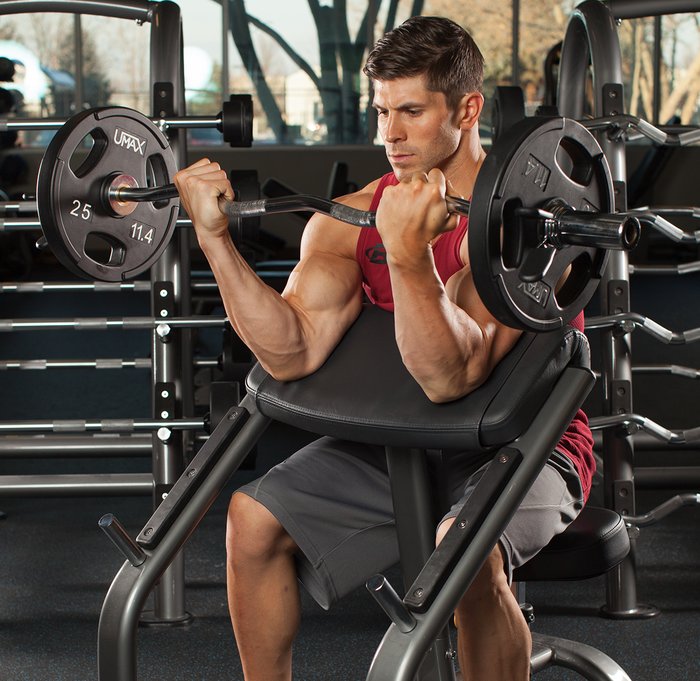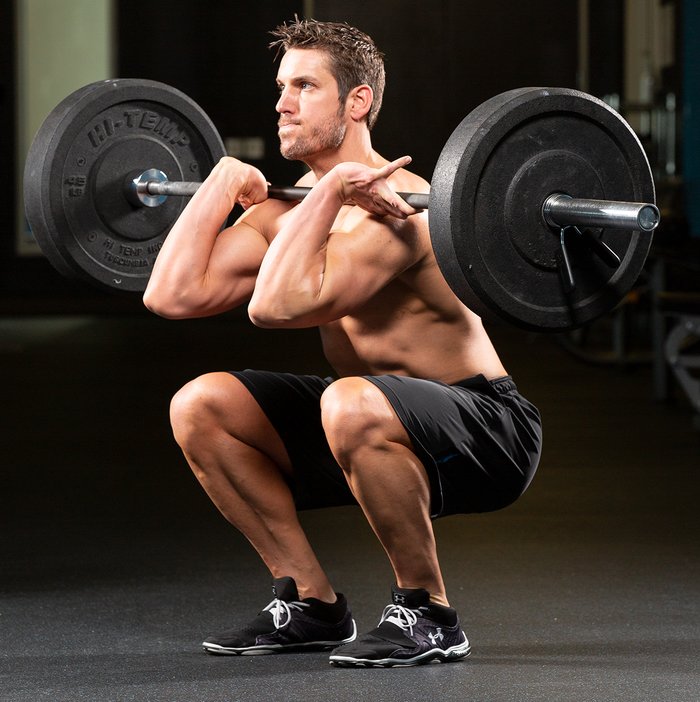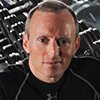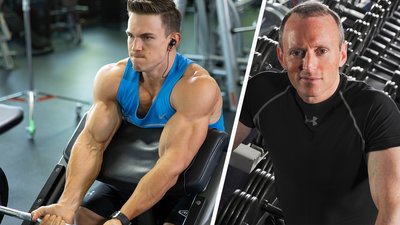Q: I see conflicting information all over the Internet concerning the ideal range of motion for building muscle. What's your take?
Proper manipulation of resistance-training variables is a key to maximizing muscle development. Although volume, load, and frequency tend to grab all the headlines, one variable that shouldn't be overlooked is range of motion (ROM). Simply put, ROM is the extent of movement of a given joint during exercise performance.
Solid evidence suggests that working through a full ROM produces superior muscle-building results compared to partial reps. For example, researchers from Brazil found that performing preacher curls at 0 through 130 degrees (full ROM) of elbow flexion resulted in markedly greater biceps growth compared to working at 50 through 100 degrees (partial ROM) of elbow flexion over the course of a 10-week training program.[1] Moreover, the superior results were achieved despite a 36-percent lower volume in the group performing curls with a full ROM.

Similar results have been shown in lower-body exercise. A recent 12-week study found that performing deep squats (0 through 120 degrees of knee flexion) significantly increased lean body mass of the legs, while shallow squats (0 through 60 degrees of knee flexion) produced no significant growth.[2] In addition, the deep squats increased the muscle cross sectional area across the entire frontal thigh, whereas shallow squats increased hypertrophy only in the uppermost region.
What's particularly interesting here is that the load was equated between groups, so that each group trained at their respective repetition maximum. In other words, heavier loads were used in the shallow squat condition, yet hypertrophy was greater when training throughout a full range. These findings are consistent with other research on the topic, indicating a clear advantage to training through a full ROM.[3]
Considering those findings, it would appear every rep should be taken through its full range. Case closed, no need for further discussion, right?
Well, Not So Fast…
Research shows a particular benefit to training in the bottom position of a movement, where the muscle is placed under a heightened stretch (i.e., long muscle length). One study found that performing leg extensions in a lengthened position (40 through 90 degrees of knee flexion) produced markedly greater quadriceps growth compared to a group training at short muscle lengths (0 through 50 degrees of knee flexion), to the tune of 53 percent versus 18 percent, respectively.[4] Importantly, training loads were equated so that the total work performed was similar between groups.
Considering that other studies have reported similar findings, it seems prudent to focus on making sure you achieve a full stretch at the bottom position of an exercise when the goal is building maximum muscle.[5]

Above all, the choice of ROM doesn't have to be an either-or decision. Research indicates that muscle activation varies based on the joint angle during exercise performance. For instance, the vastus lateralis shows greater activity during the initial portion of knee extension, whereas the vastus medialis becomes more engaged in the lock-out phase.[6] Similarly, the initial phase of a biceps curl involves greater activation of the long head of the biceps, while the short head assumes a greater burden during the latter phase.[7]
These findings suggest that combining different ranges can help to optimize muscle development. Moreover, since heavier loads can be used during shortened range movements, adding some partial rep training may further enhance growth by increasing the amount of tension on muscles.[8]
So, if your goal is to pack on size, the take-home message here is that a majority of training should be carried out through a full ROM, with particular attention paid to the fully stretched position. Some partial-rep training can then be sprinkled in for an added growth stimulus; even just a few heavy-load sets per week carried out in a muscle's strongest range can help to maximize gains.
References
- Pinto, R. S., Gomes, N., Radaelli, R., Botton, C. E., Brown, L. E., & Bottaro, M. (2012). Effect of range of motion on muscle strength and thickness. The Journal of Strength & Conditioning Research, 26(8), 2140-2145.
- Bloomquist, K., Langberg, H., Karlsen, S., Madsgaard, S., Boesen, M., & Raastad, T. (2013). Effect of range of motion in heavy load squatting on muscle and tendon adaptations. European Journal of Applied Physiology, 113(8), 2133-2142.
- McMahon, G. E., Morse, C. I., Burden, A., Winwood, K., & Onambélé, G. L. (2014). Impact of range of motion during ecologically valid resistance training protocols on muscle size, subcutaneous fat, and strength. The Journal of Strength & Conditioning Research, 28(1), 245-255.
- McMahon, G., Morse, C. I., Burden, A., Winwood, K., & Onambélé, G. L. (2014). Muscular adaptations and insulin‐like growth factor‐1 responses to resistance training are stretch‐mediated. Muscle & Nerve, 49(1), 108-119.
- Noorkõiv, M., Nosaka, K., & BLAZEVICH, A. (2014). Neuromuscular adaptations associated with knee joint angle-specific force change.
- Signorile, J. F., Lew, K. M., Stoutenberg, M., Pluchino, A., Lewis, J. E., & Gao, J. (2014). Range of motion and leg rotation affect electromyography activation levels of the superficial quadriceps muscles during leg extension. The Journal of Strength & Conditioning Research, 28(9), 2536-2545.
- Brown, J. M., Solomon, C., & Paton, M. (1993). Further evidence of functional differentiation within biceps brachii. Electromyography and Clinical Neurophysiology, 33(5), 301-309.
- Schoenfeld, B. J. (2010). The mechanisms of muscle hypertrophy and their application to resistance training. The Journal of Strength & Conditioning Research, 24(10), 2857-2872.



